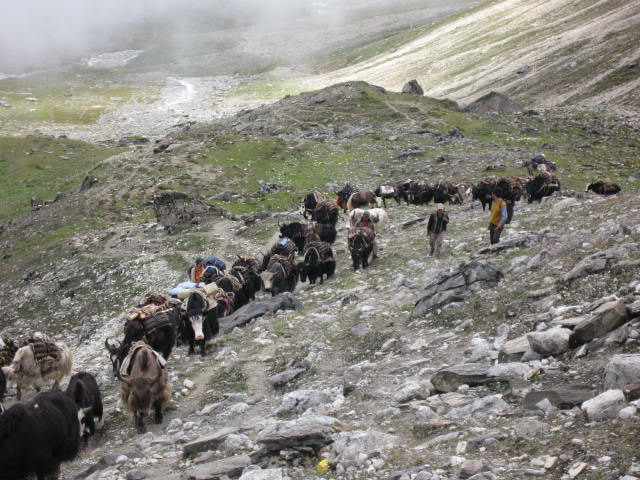E4D Fellow: Shanker Raj Barsila
Improved grazing systems with yak crossbreds in Nepal

Project duration: 2009 - 2014
Dr. Shanker Raj Barsila is currently Assistant Professor at the external pageAgriculture and Forestry University in Nepal.call_made
Supervisor at ETH Zurich
Professor Michael Kreuzer (Group of Animal Nutrition)
Collaborators
Dr. Svenja Marquardt, ETH Zurich
Dr. Naba Raj Devkota, Tribhuvan University, Nepal
Partner institutions
external pageInstitute of Agriculture and Animal Science,Tribhuvan University, Nepalcall_made
Initiative for Social Transformation Nepal (IST NEPAL), Kathmandu, Nepal
Project description

In Nepal, livestock husbandry is an important source of livelihood, in particular in the mountain regions. About one million hectare of the total pasture land available in the country (12% of total land area) is situated in mountainous regions. Traditionally, common natural resources are used for this activity. In principle, these resources have a high potential for livestock production. However, rangeland productivity is constantly declining due to high grazing pressure of mixed herds of domestic animals such as mountain goats, sheep and large ruminants (cattle, yaks and their crossbreds, which are called “Chauries” in Nepali). Among the three currently applied livestock production systems – transhumance, sedentary and stall feeding – the transhumance mode is the oldest one. Its specific feature is the herd movement between different grazing sites from temperate to high alpine altitude.
The research project aimed at investigating the socio-economic components of the transhumant grazing system, the pasture productivity and its relation to the productivity of Chauries. Among the mountain livestock species, the yak-cattle crossbreds are widely adapted and are of increasing importance in Nepal. The Taplejung district counts more than 2800 Chauries and purebred yaks. However, their status and production potential in relation to the pasture use has not yet been well documented.
